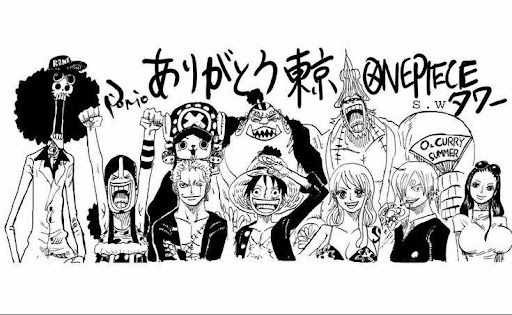
Angela Joseph
Jan 26, 2024
The Evolution of Manga
The Historical Odyssey of Manga
Manga is originally the Japanese term for "comics" or "cartoons". It has evolved into one of the most renowned and influential forms of global entertainment. The mystery of its journey from humble beginnings in the Edo period to becoming a global phenomenon, as we know today, is truly intriguing. Let's embark upon this journey, traveling through centuries of exploring the roots, historical challenges, and today’s technological impact on manga as a whole.
What is Manga?

Manga, the perfect blend of words and caricatures, is originally a Japanese style of graphic storytelling. It is usually read from the right to the left. Following this traditional Japanese writing pattern, it covers topics ranging from romance to sci-fi, providing its readers a diverse basket. Its broad applications scale beyond entertainment and serve as the eyes of its rich culture, shaping various forms of expression like anime, video games, and various other live-action adaptations.
The start of Manga: Edo Period (1603-1868)
Manga's real roots trace far back to the Edo period when books containing pictures and illustrations of narratives were celebrated. Though not coined as manga, some famous works like kusazōshi and kibyōshi laid the foundation of this culture. Artists like Hokusai, Hiroshige, and Utamaro, famous for their woodblock printing styles, contributed to these early elements of visual storytelling. It was Hokusai, who notably coined the term "manga" in his sketchbooks during such legendary times.
The Millennial Manga: Late 19th to Early 20th Century
Japan's modernization inclined with the Meiji Restoration period (1868-1912) and the following periods added fuel to manga's evolution journey. Great artists like Rakuten Kitazawa and Ippei Okamoto pioneered the movement, experimenting with the art and the caricatures introducing satire into the works. The post-war era saw the rise of kamishibai, a precursor to manga, and Osamu Tezuka, the "God of Manga". These works revolutionized the predominant medium with some iconic characters, storylines, and cinematic storytelling ideas.
The Golden Age Manga: 1960s-1970s
The emergence of magazines like Weekly Shōnen Jump in the 1960s-1970s marked the manga's “Golden Age''. Various diversified genres catering to various age groups started advancing into the manga culture during this period. Influential works like “Akira" of famous creators like Katsuhiro Otomo and Akira Toriyama shaped the landscape. This era also witnessed the disclosure of “Gekiga”, a mature writing style, often tackling some serious themes by artists like Yoshihiro Tatsumi.
Global Annexation: 1980s-1990s
Manga's transcending popularity extended beyond borders during the 1980s-1990s. Translations further helped it to be recognized as a global phenomenon. AVT adaptations and its influence on anime further expanded manga’s international reach. Famous works like "Naruto" by Masashi Kishimoto and "One Piece" by Eiichiro Oda set off as global successes, fostering and nurturing a dedicated international fan base.
The Digital Revolution and Globalization: 2000s-Present
The 2000s and beyond brought notable changes in the culture with digital advancements. Online social platforms and digital distribution provided global access to manga, overcoming geographical limitations. Creators like Kishimoto and Oda achieved international recognition, catering to manga's global appeal. Due to a substantially large market, the digital era brought never found opportunities, with both cult and inclusive stories gaining recognition from their readers, despite strong challenges like piracy.
The Diverse Manga: Today's Picturesque
Manga today encompasses many genres, themes, and artistic styles. Providing a range of works like Demon Slayer to My Hero Academia, today it caters to the diverse interests of global readers. Manga provides for various demographics, including children, women, LGBTQ+, and otaku. The creativity showcased in modern manga continues to captivate audiences worldwide.
The Future of Manga: A Continuation of Possibilities
As manga remains a dynamic and ever-changing form of artistic expression, its future holds endless potential. Beyond being a source of entertainment, manga serves as a cultural touchstone, connecting people across time and space. As it continues to evolve every day, the industry is well expected to witness further innovations and a deeper exploration of even more diverse themes by its community.
In conclusion, manga traveled from its humble origins in the Edo Period to the futuristic digital age is an honest testament to its adaptability and enduring endeavors. As manga continues to captivate global audiences, it remains a medium of expression that challenges, surprises, and inspires generations with its boundless possibilities.
Hey Otaku! If you are intrigued by the amazing world of manga and wondering where you can read quick and easy one-click translations of your favorite manga, your search is over. Head over to this link to avail free trial of Automatic AI manga translations.